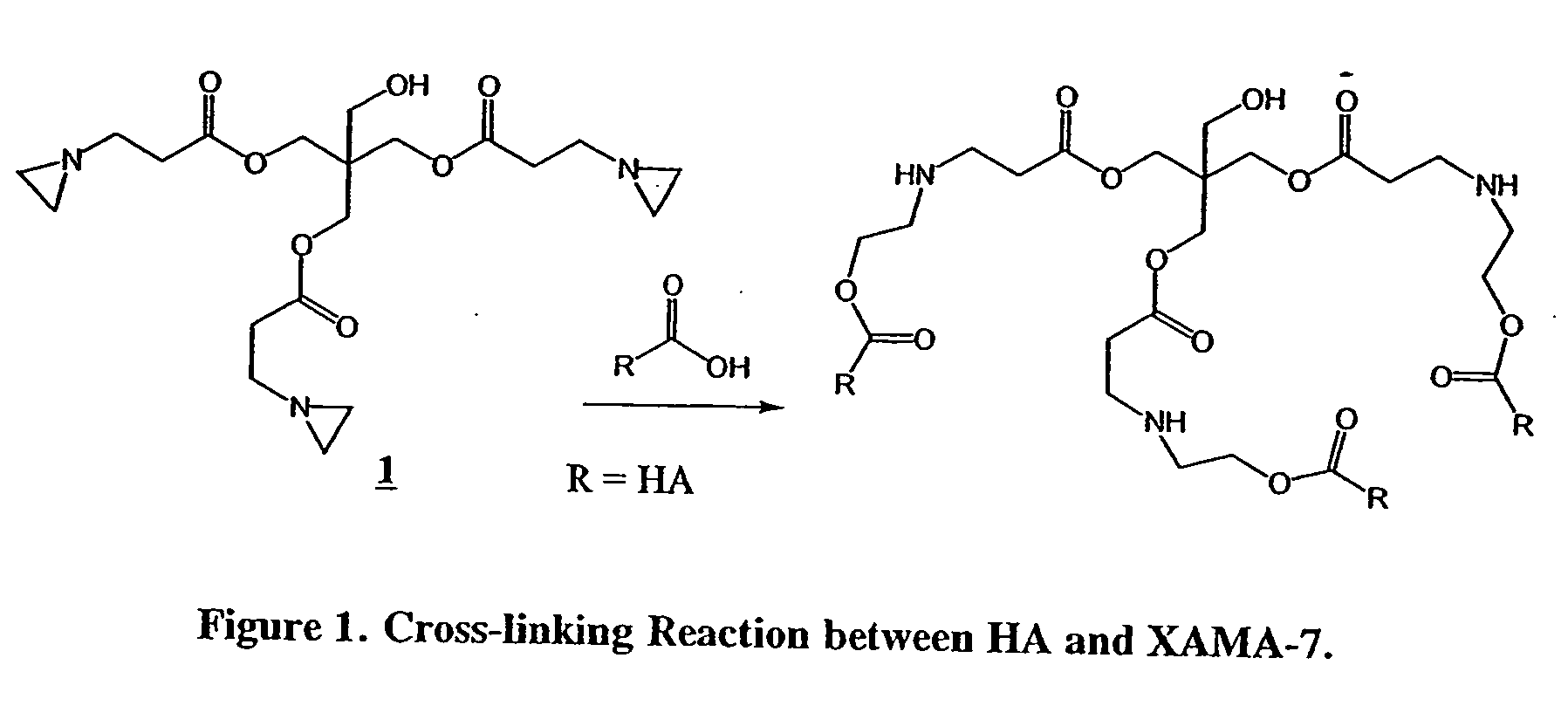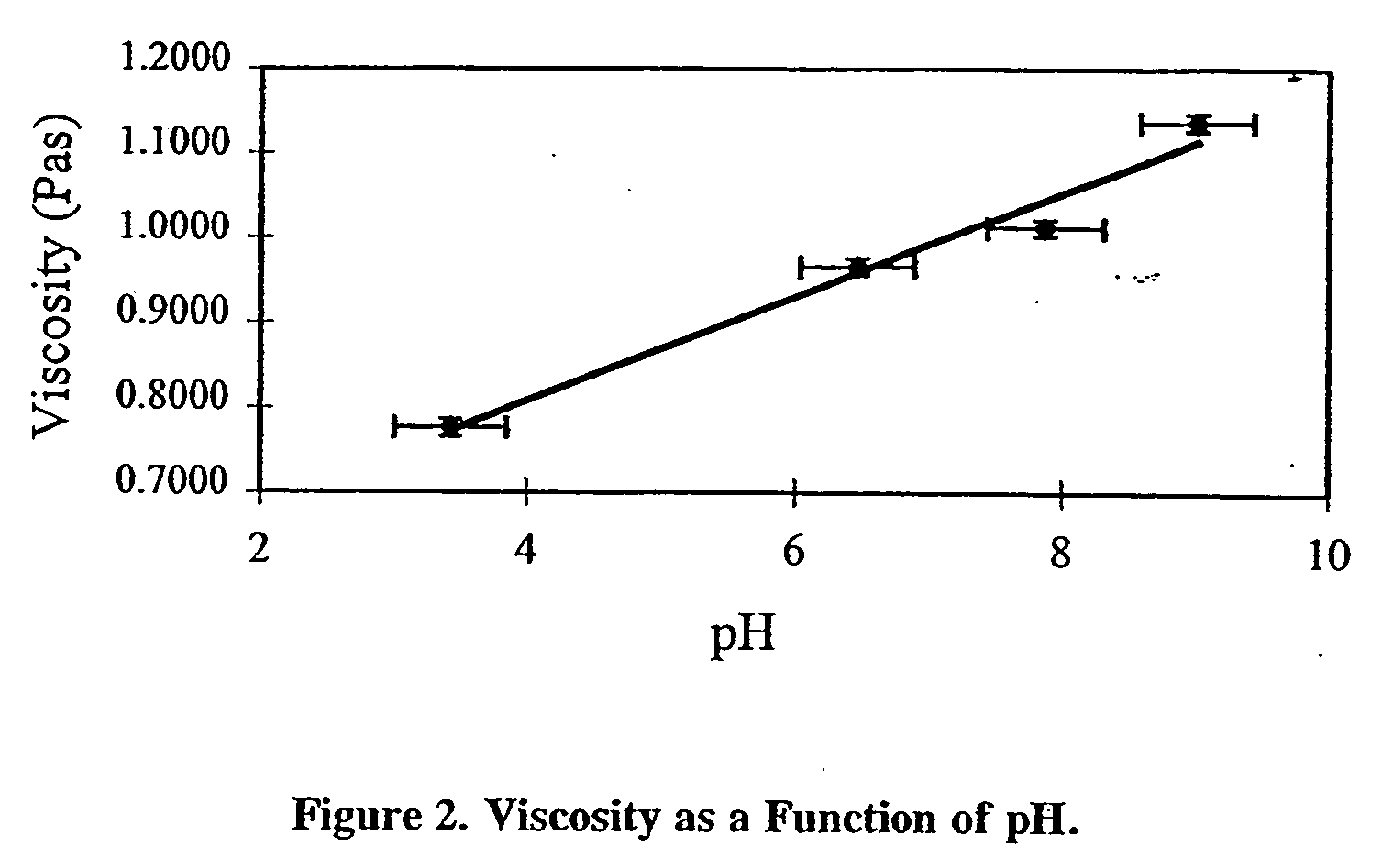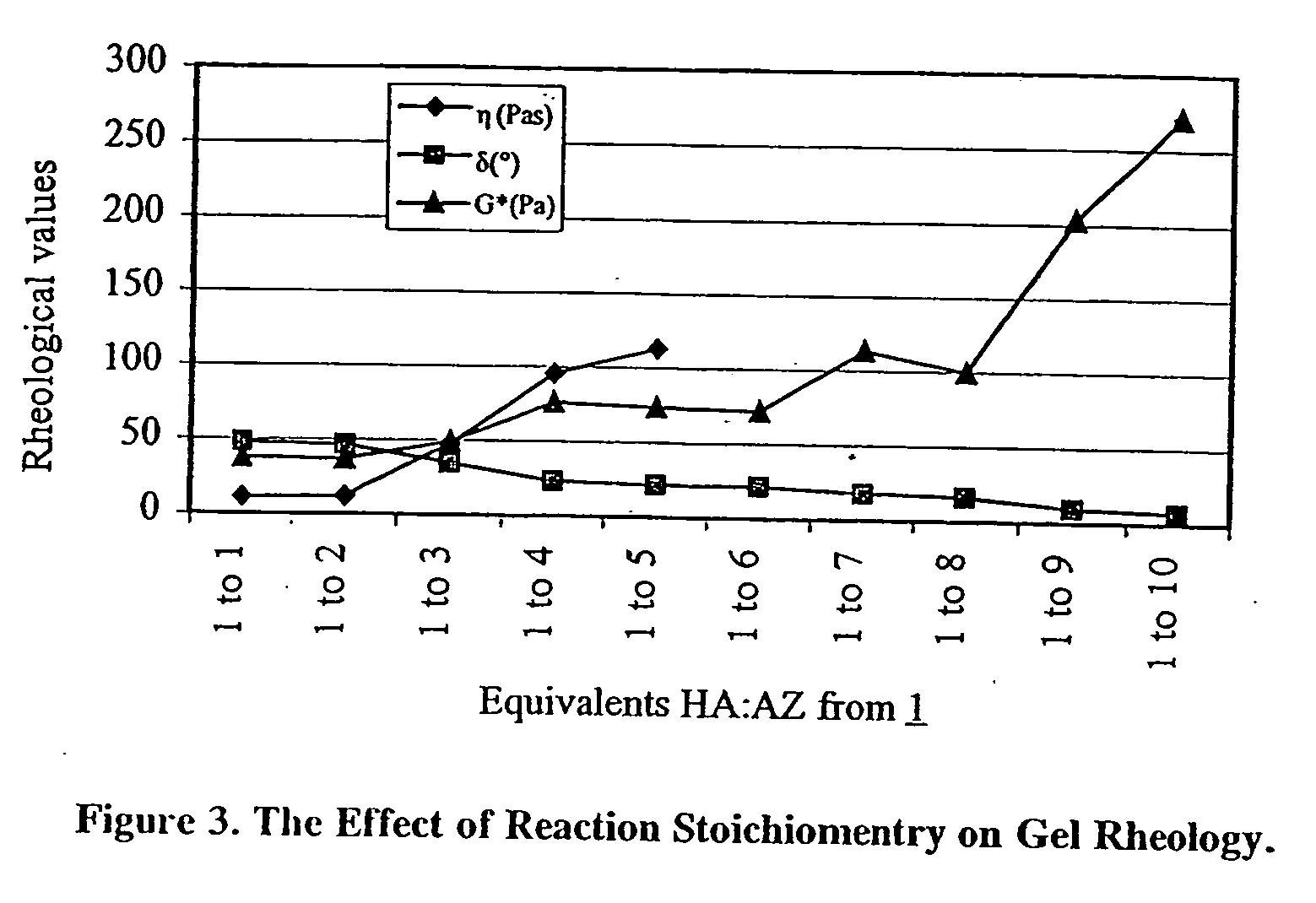Cross-linked hyaluronate compounds
a technology of hyaluronate and polymer compounds, which is applied in the field of cross-linked hyaluronate polymer compounds, can solve the problems of unacceptably long resorption rate, and unacceptably long residence time in the body, and achieve the effect of preventing formation
- Summary
- Abstract
- Description
- Claims
- Application Information
AI Technical Summary
Benefits of technology
Problems solved by technology
Method used
Image
Examples
example i
[0047] The following protocol produces a crosslinked gel having an equivalent ratio of HA:AZ of 1:1. A 0.5% w / w solution of HA with a MW of 1.5×106 Da was prepared. 4 mL of the HA solution (0.050 meq) was placed in a 50-mL round bottom flask, and the pH was adjusted to 3.5 with 0.1 N HCl. To this solution 50 μL (0.017 mmol of XAMA-7 or 0.05 meq of AZ) of a freshly prepared 0.35 M solution of XAMA-7 were added. The solution was stirred briskly for 5 minutes on a vortex and then allowed to cure at room temperature for 4 hours to produce a crosslinked gel having an equivalent ratio of HA:AZ of 1:1. Rheology values were measured and the gel obtained had a viscosity of 0.79 Pas.
[0048] Additional crosslinked gels were made by adjusting the pH of the HA solution used to react with the XAMA-7 solution. The viscosity of the crosslinked gel was determined as a function of the pH of the HA solution in the range of 3.5 to 9 and summarized in FIG. 2.
2) MW and Concentration of HA
[0049] HA of ...
example ii
[0050] A 1.0% w / w solution of HA with a MW of 1.5×106 Da was prepared. 4 mL of the HA solution (0.10 meq) were placed in a 50 mL round bottom flask. To this solution 95 μL (0.03 mmol) of a freshly prepared 0.35 M solution of XAMA-7 were added for an equivalent ratio of HA:AZ of 1 to 1. The pH of the mixed solution was 9.0. The solution was stirred briskly for 5 minutes on a vortex and then allowed to cure at room temperature for 4 hours. Rheology values were measured and the gel obtained had a viscosity of 14.07 Pas.
[0051] Additional crosslinked gels were made by adjusting the MW of the HA used to react with the XAMA-7 solution. In some cases, the initial concentration of the HA solution was also adjusted. A summary of the viscosity values for products produced by varying the MW of HA and the initial concentration of HA is in Table 1.
[0052] Table 1 summarizes viscosity values measured for products obtained using varying HA MW and starting HA concentration.
TABLE 1The Effect of HA...
example iii
[0054] A 1.0% w / w solution of HA with a MW of 1.5×106 Da was prepared. 4 mL of the HA solution (0.10 meq) were placed in a 50 mL round bottom flask. To this solution 0.5 mL (0.17 mmol) of a freshly prepared 0.35 M solution of XAMA-7 were added. For this example, 5 equivalents of AZ from XAMA-7 were added for each equivalent of HA (HA:AZ is 1:5). The pH of the mixed solution was 9.0. The solution was stirred briskly for 5 minutes on a vortex and then allowed to cure at room temperature for 4 hours. Rheology values were measured and the gel obtained had viscosity=110.00 Pas, phase angle=21.40°, and complex modulus=73.34 Pa.
[0055] Additional crosslinked gels were made by adjusting the equivalent ratio HA:AZ. Rheological values of viscosity, phase angle and complex modulus for gels of varying equivalent ratios of HA / AZ are summarized in FIG. 3.
4) Time
[0056] Rheological values were measured at 4 and 21 hours after XAMA-7 was added to a HA solution.
PUM
| Property | Measurement | Unit |
|---|---|---|
| Acidity | aaaaa | aaaaa |
| Fraction | aaaaa | aaaaa |
| Fraction | aaaaa | aaaaa |
Abstract
Description
Claims
Application Information
 Login to View More
Login to View More - R&D
- Intellectual Property
- Life Sciences
- Materials
- Tech Scout
- Unparalleled Data Quality
- Higher Quality Content
- 60% Fewer Hallucinations
Browse by: Latest US Patents, China's latest patents, Technical Efficacy Thesaurus, Application Domain, Technology Topic, Popular Technical Reports.
© 2025 PatSnap. All rights reserved.Legal|Privacy policy|Modern Slavery Act Transparency Statement|Sitemap|About US| Contact US: help@patsnap.com



